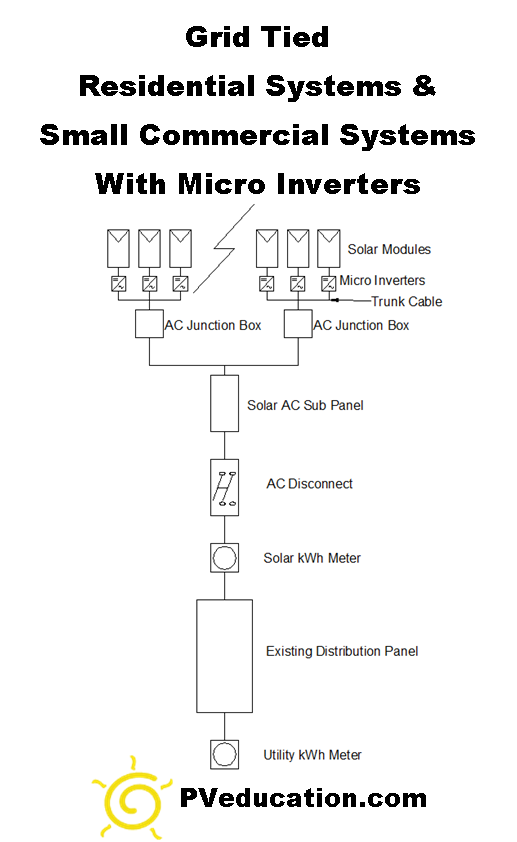Grid Tied Residential and Small Commercial Solar System with Micro Inverters
This type of system is very popular as it is one of the easiest ways to meet the newest safety codes that require each solar module to be rapidly shutdown for safety. Each solar module is wired directly to a micro inverter. Due to this one to one relationship of solar modules to micro inverters the solar module can face any direction without hurting the output of other modules. The wiring of the micro inverter output is typically to a trunk cable which is an AC cable assembly with connectors for the micro inverters. Conduit is used from the rooftop AC junction boxes to protect the wiring. These output trunk cables are run to an AC combiner box (AC sub panel with breakers) to provide overcurrent protection to the AC cables.
The AC sub panel is than wired to an AC disconnect so the AC power can be isolated from the inverter turning the entire system off. Most systems will have a solar kWh, kilo-watt hour, meter to accurately record the output of the system. From there is the system is wired into the utility grid.
A system like this works by offsetting the amount of power a home or business consumes from the utility company. Essentially the utility meter will spin backwards during the day earning you a credit that is used in the evening. If the utility power fails, this system is designed to turn off and not produce power. There are new inverters in the market place that include secure power supplies to supply some limited backup power to an outlet without the need for batteries.
